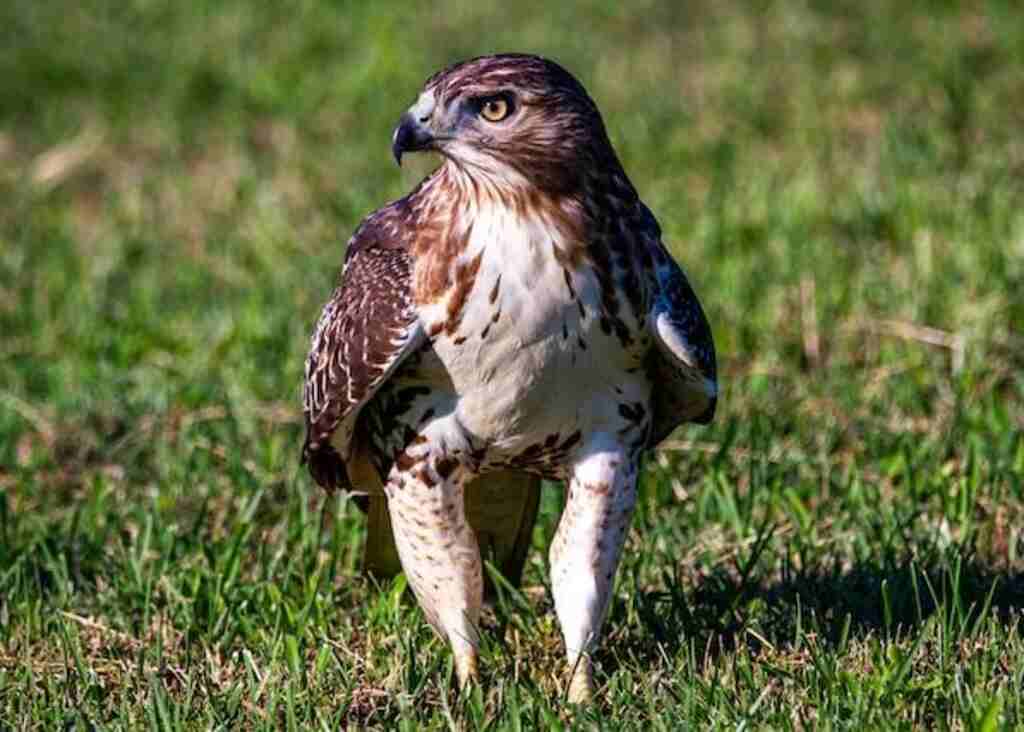Do Hawks Eat Coyotes? It’s a question that might make you do a double-take and wonder if Mother Nature has a hidden sense of humor.
While the idea of a hawk swooping down and snatching a coyote might seem like a scene out of an outrageous cartoon, the truth behind this surprising phenomenon will leave you astounded.
So, buckle up and prepare to have your wildlife knowledge turned upside down!
The short answer is no, but stick around as we dive into the fascinating world of predator-prey relationships and unravel the jaw-dropping truths that lie beneath the feathers and fur.
Table of Contents
- 1 The Hunt: Do Hawks Eat Coyotes?
- 2 Overview of Hawks and Coyotes
- 3 Hawk Predation Habits
- 4 The Diet of Coyotes
- 5 The Hunting Behavior of Coyotes
- 6 The Role of Coyotes in Ecosystems
- 7 The Impact of Human Development on Coyotes
- 8 The Relationship Between Coyotes and Humans
- 9 Rare Instances of Hawk-Coyote Interactions
- 10 Factors that Affect Hawk-Coyote Interactions
- 11 Conclusion
- 12 Summarizing Hawk-Coyote Interactions
- 13 Do Hawks Eat Coyotes?
- 14 Author
The Hunt: Do Hawks Eat Coyotes?
When we think of predators in the animal kingdom, our minds often jump to lions, tigers, and bears – oh my! However, there are plenty of other creatures out there that are just as deadly, including hawks and coyotes.
These two animals might not be at the top of most people’s lists when it comes to apex predators, but they certainly know how to hold their own. So, let’s get down to the question on everybody’s mind: do hawks eat coyotes?
It might sound like a silly question at first, but it’s worth exploring. After all, both hawks and coyotes are known for their hunting prowess.
Could it be possible that a hawk could take down an animal as large as a coyote? Before we dive into the answer, let’s take a closer look at these two animals individually.
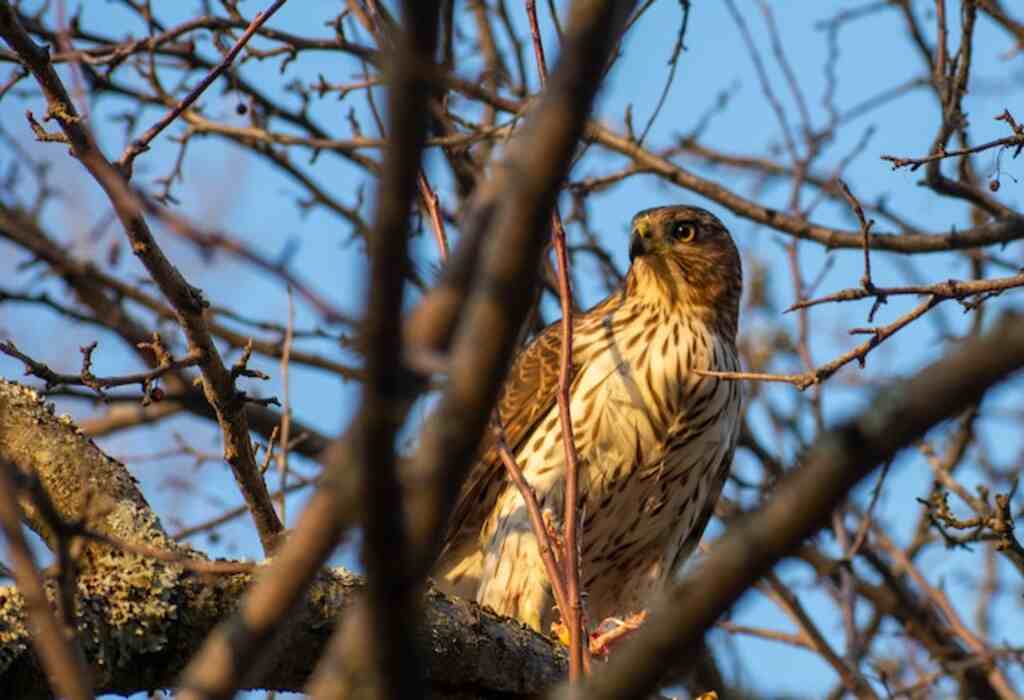
The Hunter: Hawks
Hawks are birds of prey that belong to the Accipitridae family. There are over 200 species of hawks found all over the world.
They’re known for their sharp talons and hooked beaks that make them formidable hunters. Hawks are carnivorous birds that hunt during daylight hours.
They have excellent eyesight and can spot prey from great distances – some species can even see up to eight times more clearly than humans! When hunting, hawks typically target small mammals like mice and rabbits.
They’ll also go after birds and insects if they need to. To catch their prey, hawks will swoop down from above and use their talons to grab onto them.
The Hunted: Coyotes
Coyotes are members of the Canidae family – the same family that includes wolves and domestic dogs. They’re found all throughout North America and can thrive in a variety of habitats, from deserts to forests.
Coyotes are opportunistic hunters that will eat just about anything they can get their paws on.
Their diets include small mammals like rodents and rabbits, as well as larger prey like deer and elk. They’ll also eat fruits and vegetables if they’re available.
One of the things that makes coyotes such effective predators is their ability to work together. Coyotes often hunt in packs, allowing them to take down larger prey than they would be able to on their own.
Do Hawks Eat Coyotes?
So, now that we know a little bit more about hawks and coyotes, let’s answer the burning question: do hawks eat coyotes? The short answer is no – hawks aren’t typically big enough or strong enough to take down a full-grown coyote.
While there have been rare instances of hawks attempting to hunt coyotes or other large animals, these cases are few and far between. In general, hawks prefer smaller prey like rodents or birds.
It’s simply easier for them to catch and consume animals that are closer to their own size.
While it might not be common for hawks to go after coyotes specifically, these two predators do share some similarities when it comes to hunting techniques.
Both animals rely on speed, agility, and sharp talons to catch their prey.
And while they might not always get along in the wild (coyotes have been known to chase off or attack smaller birds of prey), there’s no denying that both species are impressive hunters in their own right.
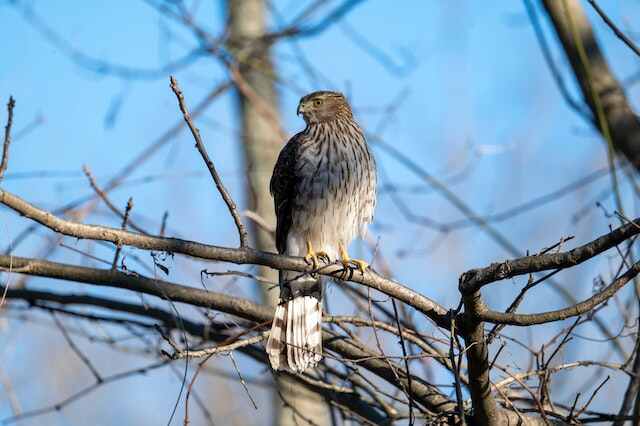
Overview of Hawks and Coyotes
The Amazing Hawks
Hawks are majestic birds of prey known for their sharp talons, hooked beaks, and exceptional eyesight. They belong to the Accipitridae family, which includes other raptors such as eagles and vultures.
Hawks come in many shapes and sizes, ranging from the tiny sparrowhawk to the massive harpy eagle. They are found all over the world, except for Antarctica.
Hawks are adapted for hunting with a combination of speed, agility, and deadly accuracy. They can reach speeds of up to 120 miles per hour in a dive called a stoop.
Their wingspan ranges from 18 inches in the smallest hawks to over 7 feet in some eagles. Hawks have keen eyesight that allows them to spot prey from high in the sky or far away on the ground.
The Wily Coyotes
Coyotes are native to North America and are found throughout Canada, Mexico, and the United States. They are medium-sized canines that resemble wolves but are smaller in size with a scruffier coat.
Coyotes have adapted well to human expansion and can be found living in urban areas as well as rural environments.
Coyotes are opportunistic hunters that will eat almost anything they can find or catch on their own or scavenged from other predators’ kills.
Their diet includes small mammals such as rabbits, rodents like mice or voles; birds like quail or dove depending on availability during different seasons.
Habitats of Hawks vs Coyotes
The habitats of hawks and coyotes overlap significantly because they both live in open areas like grasslands or deserts where there is an abundance of prey animals available for hunting.
Hawks prefer environments with open spaces such as prairies, deserts, and grasslands where they can swoop in for prey easily.
They tend to avoid densely wooded areas because it limits their ability to hunt effectively.
Coyotes, on the other hand, are more adaptable and can live in many different environments such as forests, mountains, deserts and even urban areas as long as they have access to food sources.
Diets of Hawks vs Coyotes
Hawks are carnivores that feed mainly on small mammals such as mice, voles, rabbits or snakes. Larger hawks will also hunt birds like pigeons or ducks if available. Coastal hawks will feed on fish and sea creatures.
Coyotes are opportunistic omnivores that eat almost anything they can find – from scavenged roadkill or garbage to their own kills.
Coyotes mostly prey on small mammals like rodents or rabbits but also eat larger animals like deer if the opportunity arises.
Behaviors of Hawks vs Coyotes
Hawks are solitary hunters except during mating season when they form pairs, but generally stay away from each other otherwise. They typically nest high up in trees or cliffs and fiercely defend their territory against other predators.
Coyotes are social animals that live in packs with a strict hierarchy system. Their pack size varies from 2-12 members depending on environmental factors like food availability or seasonality.
Coyotes howl together at night to communicate with each other about their location and territory boundaries. Hawks and coyotes have very different hunting strategies despite sharing similar habitats.
While hawks hunt alone and rely heavily on sight for precise targeting, coyote packs work together using various hunting techniques depending on the size of their prey target.
Understanding these differences is important when exploring whether do hawks eat coyotes – which we will dive into next!

Hawk Predation Habits
The Hawk’s Hunting Habits
Hawks are known for their incredible hunting abilities. They are birds of prey that have specialized adaptations for catching and killing their prey.
Their preferred prey includes smaller animals like rodents, rabbits, and small birds. However, there have been rare instances where hawks have attempted to take down larger prey like coyotes.
These birds use a variety of techniques to catch their prey. Some hawks hunt from a perch, waiting patiently for their prey to come within striking distance.
Others will soar high above the ground searching for movement below. When they spot something, they will dive towards their intended target at high speeds.
How Hawks Take Down Larger Prey
You may be wondering how a bird as small as a hawk is able to take down larger animals like coyotes. Well, hawks use a combination of speed and agility to catch their prey off guard.
When hunting larger animals, hawks will often swoop down onto the animal with great force, using their sharp talons to grab onto the animal’s fur or skin.
They will then use their powerful wings to hold onto the animal while it struggles to get away.
Another technique that hawks use is called tandem hunting. This involves two hawks working together to bring down a larger animal.
One hawk will swoop in and distract the animal while the other comes in from behind and grabs onto its back or neck.
Overall, while it is rare for hawks to attempt taking down an animal as large as a coyote due to size differences and other factors discussed later on in this article – if they do choose such an impressive challenge -they utilize many techniques that allow them not only claw but actually win battles against those much bigger than themselves.
Prey Preferences
As mentioned earlier, smaller animals like rodents and rabbits are the preferred prey of hawks. These animals are easier to catch and offer a good source of nutrition for the hawk.
However, hawks have been known to take on larger prey when food is scarce or when they are feeling particularly ambitious.
Hawks have also been observed eating a variety of other animals, including snakes, lizards, fish, and even insects.
They are opportunistic hunters that will take advantage of whatever prey is available in their habitat.
The Impact of Habitat on Hunting Habits
The habitat that a hawk lives in can greatly impact its hunting habits. Hawks that live in open areas like fields or deserts tend to be more aggressive hunters because they have less cover to hide behind while hunting.
Hawks that live in wooded areas or forests may use different hunting techniques because there is more cover available for them to use while stalking their prey.
Overall, hawks are incredibly skilled predators that use a variety of techniques to catch their prey.
While it’s not common for them to go after larger animals like coyotes, they certainly have the skills and abilities needed if they choose such a feat – reminding us all why these birds continue inspiring awe throughout history & cultures worldwide!
The Diet of Coyotes
Coyotes are opportunistic feeders and will eat just about anything they can get their paws on. Their diet is extremely varied and can include small mammals such as rodents, rabbits, and squirrels, but also larger prey such as deer.
They are also known to consume fruits, berries, and insects when other food sources are scarce.
One of the reasons that coyotes are so successful as predators is that they have a very adaptable diet. They will shift their feeding habits based on the availability of prey in their environment.
For example, in some areas where rabbits and rodents are plentiful, coyotes may consume mostly these smaller prey items.
In other areas where there are more deer or livestock, coyotes may focus more on these larger animals.
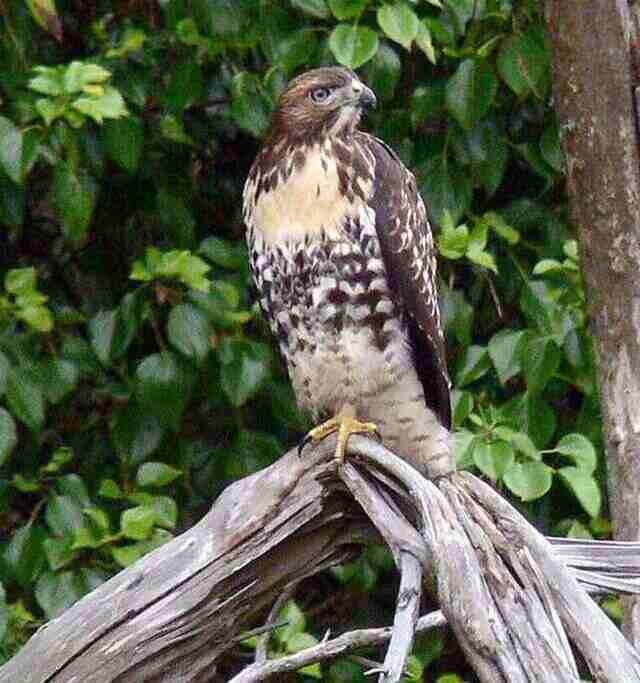
The Hunting Behavior of Coyotes
Coyotes have a range of hunting techniques that allow them to catch a wide variety of prey items. They may hunt alone or in packs depending on the size of the prey they are targeting. In general, coyotes will stalk their prey from a distance before launching an attack.
Unlike some predators such as wolves or lions that rely on sheer strength to take down large animals, coyotes use speed and agility to catch their prey.
They can run up to 40 miles per hour for short distances, which allows them to easily chase down smaller mammals like rabbits or squirrels.
The Role of Coyotes in Ecosystems
Coyotes play an important role in many different ecosystems as apex predators at the top of the food chain. By controlling populations of smaller mammals like rodents or rabbits, they help maintain balance within the ecosystem.
In some cases where there has been too much human intervention (such as over-hunting), coyote populations have been depleted, which has led to imbalances within ecosystems.
For example, without enough coyote predation, rabbit or rodent populations may grow out of control and damage plant life. This can in turn have a negative impact on other species in the ecosystem.
The Impact of Human Development on Coyotes
Coyotes have adapted well to living in urban environments and are often seen scavenging for food within cities. However, human development can also negatively impact coyote populations.
For example, as more land is developed for housing or agriculture, there is less habitat available for coyotes and other wildlife.
In addition, human activity such as hunting or trapping can reduce coyote populations, which can cause imbalances within ecosystems.
In some cases where coyote populations have been depleted through hunting or other means, there has been an increase in rodent or rabbit populations, which has led to crop damage and other issues.
The Relationship Between Coyotes and Humans
In many areas, there is conflict between humans and coyotes due to competition for resources such as food or space. Coyotes are sometimes seen as a nuisance by humans because they may prey on livestock or pets.
However, it’s important to remember that coyotes are native animals that play an important role in maintaining balance within ecosystems.
As humans continue to develop land and encroach on wildlife habitats, it’s important to find ways to coexist with coyotes and other wildlife instead of viewing them as a threat that needs to be eliminated.
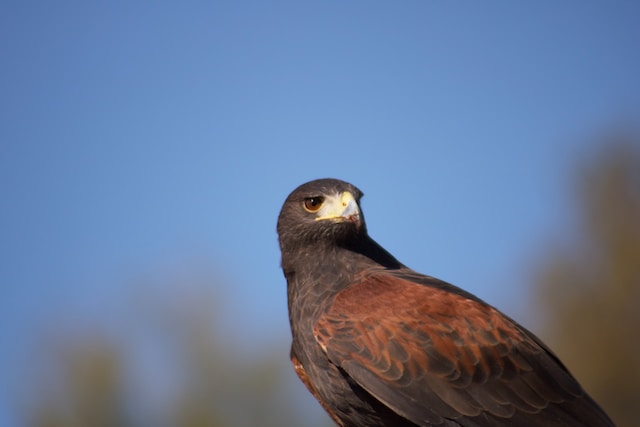
Rare Instances of Hawk-Coyote Interactions
When David Fights Goliath: A Look at the Rare Cases of Hawks Taking Down Coyotes
Hawks are typically recognized for their speed and agility, enabling them to catch small prey such as rodents and reptiles. However, coyotes, being larger and more powerful, hold a significant position in the food chain, alongside creatures like bears and wolves.
However, there have been documented cases where hawks have attempted to or successfully taken down coyotes – but these instances are incredibly rare.
One such instance was captured by a photographer named Larry Master in New York’s Central Park. He witnessed a red-tailed hawk attacking a young coyote, perhaps less than six months old.
The hawk repeatedly swooped down on the coyote from above while it tried to defend itself with its teeth and claws. Eventually, the hawk managed to get a good grip on the coyote’s back and flew off with it.
Another documented case was observed by wildlife biologist Jim Carpenter at Yellowstone National Park. In this instance, a red-tailed hawk attacked an adult coyote from behind while it was feeding on an elk carcass.
The hawk managed to latch onto the coyote’s back and fly off with it for about 50 meters before dropping it.
These cases may be rare because hawks are not normally equipped to take down such large prey as coyotes.
As previously mentioned, hawks usually go after smaller animals like rodents and reptiles that they can catch with ease.
Additionally, even if they do manage to get a hold of larger prey like coyotes, they may struggle to keep them aloft due to their weight.
The Predator Becomes Prey: Coyotes Fighting Back Against Hawks
While these cases of hawks taking down or attempting to take down coyotes are certainly fascinating, they are not always successful.
Coyotes are known for their cunning and ability to adapt to different situations, which includes defending themselves against predators like hawks.
In one particular instance, a photographer named Tom Mangelsen captured a photo of a coyote catching a great horned owl in mid-air.
The coyote had apparently been stalking the owl, waiting for it to take flight, before leaping up and catching it with its teeth.
While this may be an uncommon occurrence, it shows that hawks aren’t the only predators out there capable of taking down larger prey.
Unlikely Interactions: Why Hawks Rarely Prey on Coyotes
Given the size difference between hawks and coyotes, it’s no surprise that these interactions are so rare. However, there may be other factors at play as well. For one thing, coyotes are known for their adaptability and intelligence.
They can learn quickly how to avoid or defend against predators like hawks.
Additionally, coyotes tend to be more cautious than other animals when it comes to large birds of prey like hawks because they have better eyesight and can see them coming from further away.
Another reason why these interactions may be rare is simply because of habitat overlap.
While both hawks and coyotes can be found in many of the same areas throughout North America, they may not always cross paths due to differences in behavior or diet.
Conclusion: When Goliath Wins
While instances of hawks taking down or attempting to take down coyotes do occur from time-to-time, they are incredibly rare due to many factors, including size differences between the two animals and habitat overlap.
Coyotes have adapted over time to defend themselves against predators like hawks; however, they still remain vulnerable in certain situations.
Despite their small stature compared to a coyote’s massive frame, some hawks have proven that they are still a force to be reckoned with.
The ability of these birds of prey to take down larger animals is a testament to their agility and skill. However, it also highlights the delicate balance between predator and prey in the natural world.
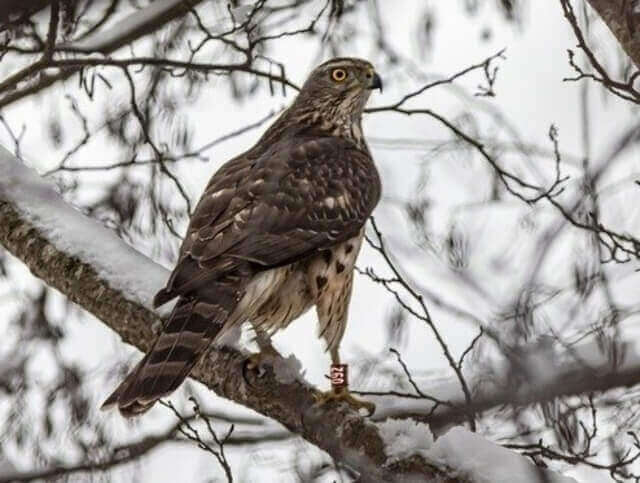
Factors that Affect Hawk-Coyote Interactions
Size Differences
One of the main factors that affect hawk-coyote interactions is the size difference between these two animals.
While hawks are known for their impressive hunting skills, they are much smaller than coyotes, and taking down such a large mammal could be quite challenging.
Hawks might attempt to target younger or weaker coyotes to increase their chances of success, but overall, it is unlikely that a hawk would attack a healthy adult coyote.
Habitat Overlap
Another factor that affects hawk-coyote interactions is habitat overlap. Coyotes tend to live in more open areas like grasslands and deserts, while hawks prefer forests or woodlands where they can find perches for hunting.
However, there are some areas where both species may coexist, which could increase the likelihood of interactions between them.
Prey Availability
Prey availability can also play a role in whether hawks attempt to take down coyotes. If there are plenty of smaller prey options available for hawks, such as rodents or birds, they may be less likely to target larger prey like coyotes.
Conversely, if food sources are scarce and hawks are struggling to find enough food to survive, they may be more inclined to take risks and go after larger prey.
Coyote Behavior
The behavior of the coyote itself can also influence whether it becomes a target for a hawk. Coyotes are known for being highly adaptive creatures and have been observed displaying behaviors such as hiding in dense vegetation or simply avoiding open spaces during times when predators like hawks are most active.
Hawk Species Variations
It’s worth noting that different species of hawks may have different preferences when it comes to prey and hunting strategies.
For example, smaller hawks such as the Cooper’s hawk may be more likely to target smaller mammals like rodents, while larger hawks such as the red-tailed hawk may be more likely to hunt larger prey like rabbits or squirrels.
Understanding these differences can provide further insights into the likelihood of hawk-coyote interactions in different environments and situations.
While it is possible for a hawk to take down a coyote under certain circumstances, these interactions are relatively rare.
The size difference between hawks and coyotes, habitat preferences, prey availability, coyote behavior and differences in species characteristics all play a role in whether these two animals will interact with each other.
By understanding these factors and observing wildlife with respect and caution in their natural habitats, we can better understand how they coexist.
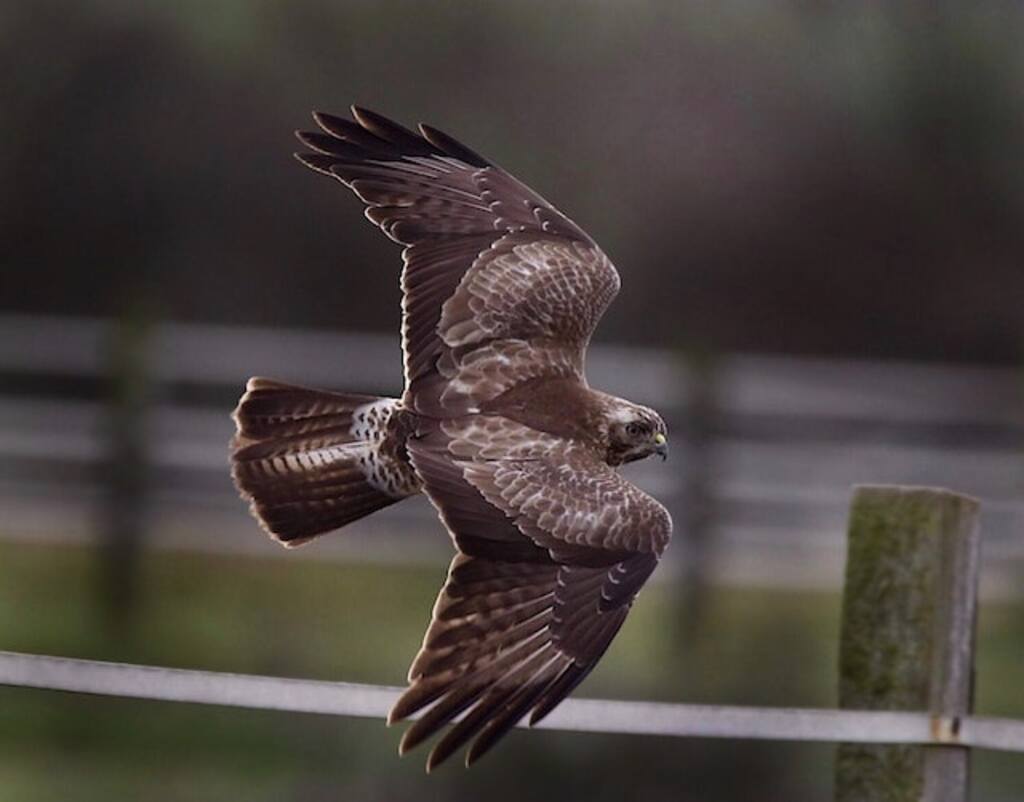
Conclusion
Summarizing Hawk-Coyote Interactions
After discussing the hunting habits of hawks and the diet and behavior of coyotes, it is clear that interactions between the two are rare.
While there have been documented instances where a hawk has attempted to or successfully taken down a coyote, these encounters are not common.
Factors such as size differences, habitat overlap, and prey availability all play a role in determining whether a hawk would attempt to take down a coyote.
It is important to note that the relationship between hawks and coyotes is usually one of mutual avoidance.
Coyotes are apex predators in many ecosystems and are not typically preyed upon by birds of prey.
Hawks, on the other hand, prefer smaller prey such as rodents and birds.
Do Hawks Eat Coyotes?
So, do hawks eat coyotes? While it is certainly possible for a hawk to take down a coyote under certain circumstances, it is not something that occurs frequently in nature.
The size difference between these two animals alone makes such an encounter unlikely. It’s also worth noting that both hawks and coyotes play important roles in their respective ecosystems.
Hawks help to control populations of smaller animals while providing food for other predators such as owls and eagles.
Coyotes help to keep populations of herbivores like deer in check while also scavenging carrion.
While it may make for an exciting image to imagine a hawk swooping down on a coyote, this scenario is not one that often occurs in nature.
Both hawks and coyotes are important members of their respective ecosystems and should be appreciated for their unique roles in maintaining balance within those systems.

